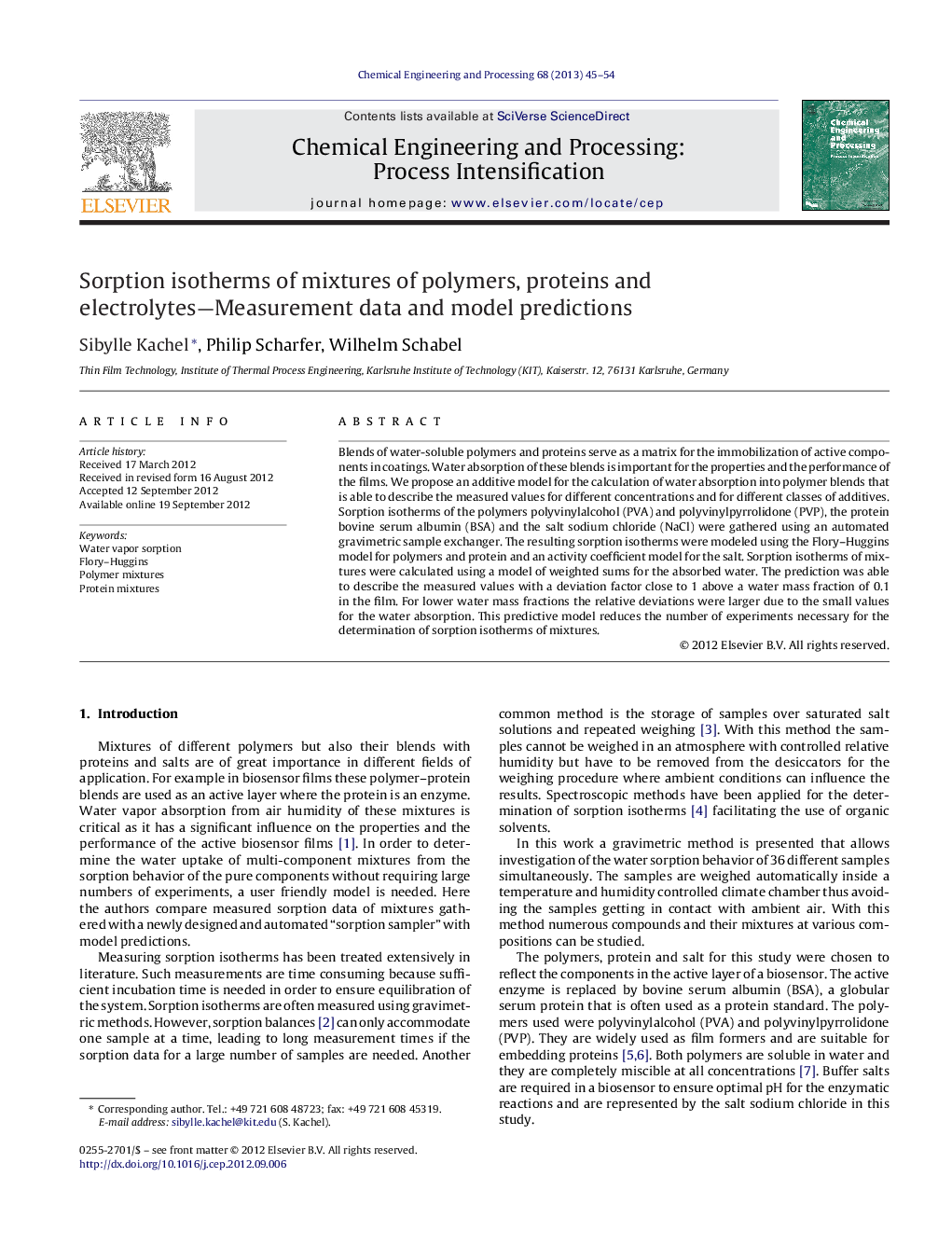| Article ID | Journal | Published Year | Pages | File Type |
|---|---|---|---|---|
| 687117 | Chemical Engineering and Processing: Process Intensification | 2013 | 10 Pages |
Blends of water-soluble polymers and proteins serve as a matrix for the immobilization of active components in coatings. Water absorption of these blends is important for the properties and the performance of the films. We propose an additive model for the calculation of water absorption into polymer blends that is able to describe the measured values for different concentrations and for different classes of additives. Sorption isotherms of the polymers polyvinylalcohol (PVA) and polyvinylpyrrolidone (PVP), the protein bovine serum albumin (BSA) and the salt sodium chloride (NaCl) were gathered using an automated gravimetric sample exchanger. The resulting sorption isotherms were modeled using the Flory–Huggins model for polymers and protein and an activity coefficient model for the salt. Sorption isotherms of mixtures were calculated using a model of weighted sums for the absorbed water. The prediction was able to describe the measured values with a deviation factor close to 1 above a water mass fraction of 0.1 in the film. For lower water mass fractions the relative deviations were larger due to the small values for the water absorption. This predictive model reduces the number of experiments necessary for the determination of sorption isotherms of mixtures.
► An additive model for the calculation of water sorption in polymer mixtures is proposed. ► The model is supported by the measurement of sorption isotherms mixtures. ► Different classes of components can be described using the model.
